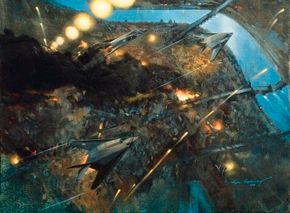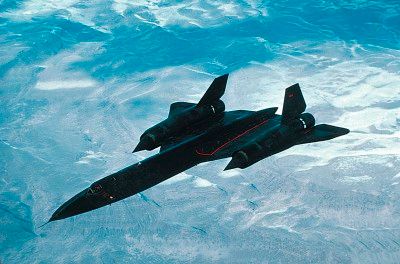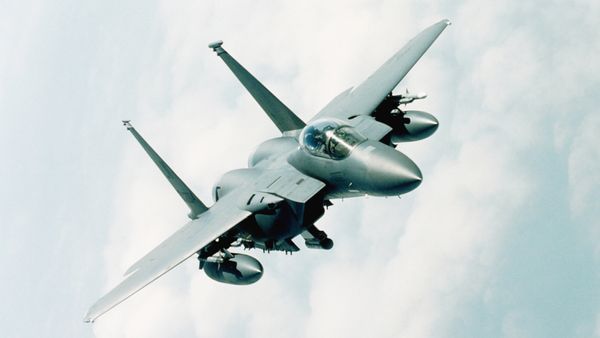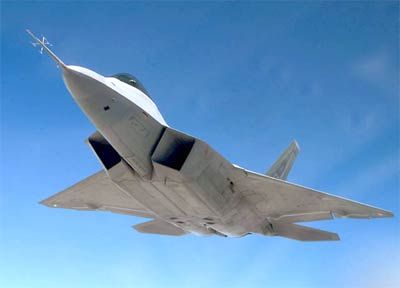The famous Lockheed F-117A Nighthawk Stealth Fighter was that rarest commodity in the American military arsenal -- a well-kept secret. Lockheed began development of the Stealth Fighter at its secret Skunk Works facility in 1976, and by 1977 had subscale-technology demonstrators flying under the code name Have Blue at the famous Area 51 proving grounds at Groom Dry Lake, Nevada.
Advertisement
Led by the late, great Ben Rich, engineers at the Skunk Works developed a formula for stealth by constructing an aircraft with flat surfaces placed at angles so that incoming radar beams are deflected away. (Kelly Johnson, the founding father of the Skunk Works, had stayed on as a consultant, and in his view, Ben's ideas simply would not work. Ben was delighted to be able to prove, for once, that his old boss was wrong.)
This faceted-plate construction technique, combined with the use of radar-absorbent materials and careful attention to the suppression of infrared signals, reduced the radar signature of the supersecret Stealth Fighter to the size of a marble. It was, quite literally, invisible to radar.
The first Lockheed F-117A Nighthawk Stealth Fighter prototype flew on June 18, 1981, piloted by Harold Farley, Jr., but the existence of the aircraft was not acknowledged by the Air Force until 1988. The need for secrecy stemmed from the unique nature of the F-117A's mission. It was to fly alone against the heaviest enemy defenses, and destroy key command and control centers, radars, and other vital targets with precision-guided munitions.
The term "stealth fighter" is really a misnomer, for the F-117A is purely an attack aircraft, and does not have the armament or the maneuverability to engage in dogfighting. The nature of the mission and the characteristics of the aircraft demanded extremely skilled, well-trained pilots, and competition for the chance to fly the Nighthawk was intense.
The aircraft was introduced into combat on December 19, 1989, in Operation Just Cause, the U.S. attack on Panama to capture President Manuel Noriega. When Iraqi leader Saddam Hussein invaded Kuwait, the F-117As were called into action. Twenty-one Nighthawks flew from their Tonopah, Nevada, base to Langley Air Force Base, Virginia. From there, 18 of the aircraft made the 15-hour nonstop flight to King Khalid Air Base in Saudi Arabia, refueling seven times en route.
Keep reading to learn more about the Lockheed F-117A Nighthawk Stealth Fighter, and to check out specifications for this airplane.
For more information on airplanes, check out:
- Classic Airplanes
- How Airplanes Work //]]]]> ]]>
Advertisement



